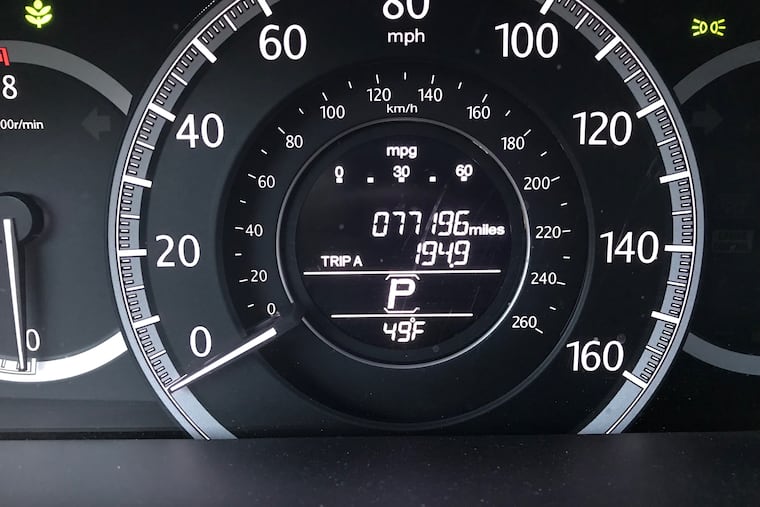It’s freezing, but the car dashboard says it’s 50 degrees outside. What’s going on?
Those temperatures readings on your dashboard are part of an ingenious system. Just don't take them too literally.

By all accounts — weather app, radio, frozen fingers — it’s bone-chillingly cold. Maybe snow is even in the forecast. Yet when you turn on the car for the drive home, the display on your dashboard insists that it’s 50 degrees outside. What to believe?
Go with the frozen fingers.
Car-temperature sensors are rather ingenious devices, but they often need to warm up a bit before they cool off.
The heat stored on the street or paved parking lot could be toasting the sensor, said Bruce Eisenstein, a Drexel University professor of electrical and computer engineering. Or the equipment still could be feeling residual heat from an engine that had been cooking at 180 degrees or so before the car was turned off.
That said, Eisenstein, past president of the Institute of Electrical and Electronics Engineers, is a fan of those temperature-sensing devices. Once the car gets going at a reasonably steady speed for, say, 15 or 20 minutes, the sensors perform quite well. “It’s amazing how accurate they are,” he said.
Typically, say Eisenstein and other experts, they are within a couple of degrees of the actual outside temperature, and they can be valuable safety features.
But, they also caution that even at their best, the readings in all likelihood will be imprecise, and that’s an important caveat.
The sensors cannot tell a motorist when the vehicle is about to drive onto a skating rink, said Brian Donegan, digital meteorologist at weather.com.
“They are not precision instruments,” warned AAA Mid-Atlantic, “and should not be used to assess critical situations such as whether the temperature might be cold enough for water on the road to freeze.”
How do these things work?
They are not thermometers, but in most cases are thermistors — a marriage of “thermal” and “resister” — homely devices that come in various shapes and can look something like a tuning fork or a couple of prongs trying to wriggle away from a match head.
As temperatures change, so does the voltage, explains Dirk Restvedt, applications engineer Wavelength Electronics of Bozeman, Mont., which makes these things.
“A microprocessor in the dash translates the voltage into the corresponding temperature," he said. "Circuitry then converts those measures to the digital temperature display on the dashboard.”
Usually the thermistors are placed in protected areas somewhere behind the front bumper, on either side, to minimize the effects of direct sun, warmed-over blacktop, and engine heat, all of which can distort the readings significantly.
The position can vary, depending on the car model, and Eisenstein said that’s one reason that any given two cars could be displaying different readings.
Why aren’t they precise?
As Donegan points out, the “ambient” official temperatures relayed by the National Weather Service are taken in sheltered locations, about 6.5 feet off a grassy surface — not a paved one.
Some National Weather Service observers house their thermometers in so-called cotton region shelters, variants of the “Stevenson Screens” named for their inventor, the father of writer Robert Louis Stevenson.
By contrast, a car thermistor likely is about two feet above a surface that usually is paved. Calibration could take several miles of driving.
If a car has been parked on a driveway overnight, the instrument still is capturing some of the stored heat of the blacktop.
A reading would tend to be more accurate at night or when it’s cloudy, said weather.com’s Donegal.
But “it’s never going to be as good as a stationary thermometer in a sheltered location,” Eisenstein said.
What good are they?
Dashboard readouts are useful for tracking trends when temperatures are falling toward freezing, or when driving through hilly or mountainous areas where temperatures are volatile.
Eisenstein said they were quite useful on his ski trips.
In the old days, he said, he went to far as to attach a thermometer to an outside mirror to track the temperatures.
The technology has been around for 30 years or more, said Restvedt, but in the last 15 years or so has become ever more popular in cars.
“I was really pleased when I bought one that had one,” Eisenstein said.